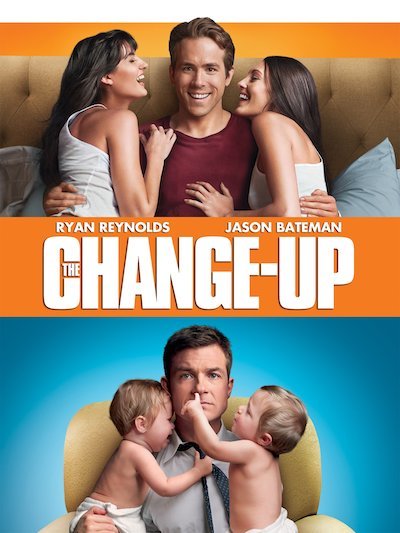Modest Mentalism
/It started with this post about the basketball trick-shot guy who was cursed to make all his shots.
Then there was a mailbag question about maybe applying that concept to mentalism, i.e. being able to read people’s minds but your premise is that you don’t want to. That it’s a curse. My response was that it would be a little hard to pull that off because it would be difficult to justify the process involved for your mind reading if your premise was that you didn’t want to read people’s minds. (It can be hard enough to justify the process when your premise is you do want to read people’s minds.)
Those posts led to some feedback from people with other ideas for a more modest approach to mentalism. Where either you’re not always right or you don’t want to be right, or there’s some other layer to the presentation besides, I’M GOING TO READ THE SHIT OUT OF YOUR MIND!!!
I will share some of these ideas in the next week or two.
In today’s post we have a couple ideas that could make interesting stage/parlor presentations. I wouldn’t build a 75 minute show around these ideas—it would be too narrowly focused. But I can see someone pulling off a successful 20ish minute show with these premises.
[Here’s] a complete show concept. 'I brought you together because this is my last show of mentalism, I don't want to hear your thoughts anymore.'
My therapist says it started on stage.
It must end on stage...
It started one day when I was asking the audience for words for an improv show, and quickly I was hearing the words before people said them...
Since my life is hell. As soon as people focus on something I get it.”
Then do classic routines trying to miss them, but it's successful.
At some point find a reason, why it started? that day I drank a soda through my nose!
Do the opposite, and finally miss the next 3 routines!!!
3 random choices that you can't find!
Ending with 'now I just have to get rid of my gift of prediction', turn over a blackboard, the 3 choices were written on it! - Thomas P.
As a rough idea… I like it. That you accidentally did something once that triggered some sort of ability, and now you want to say goodbye to that ability by doing it again, or doing the opposite of whatever caused this ability.
In The Change-Up, Ryan Reynolds and Jason Bateman switch bodies after they both pee in the same fountain at the same time. To switch back they have to pee in that same fountain again.
My point being, in a theatrical setting, the rationale for why something happened doesn’t need to be super strong. So it’s not the sort of thing where you have to struggle really hard to come up with some plausible reason why you gained this ability. There is no plausible reason why you gained an ability to read people’s minds.
To give the show some structure, you could do something like this… You say you gained the ability to read minds a few years ago during an improv show in which you were performing. “I don’t know how it happened. I don’t know what caused it. But I do remember three weird things happened in that show. First, I did what I thought was a gibberish chant during one of the scenes. Maybe it was gibberish… or maybe I accidentally stumbled over some kind of… I don’t know… incantation? And that somehow gave me the ability to read minds? I’ve watched a video from that show and memorized my babbling so I can try it again tonight.
“The second weird thing that happened was when I went to shake an audience member’s hand at the start of the show, I didn’t notice he was eating an open-faced PB&J sandwich and I got peanut butter and jelly all over my hand. Could that have somehow caused this ability? I know that seems like I’m grasping at straws. But it seems much less crazy when you realize I’ve only had my hand covered in peanut butter and jelly once in my life… then 10 minutes later I could read minds.
“And the final thing that happened was I got electrocuted by some faulty wiring in the microphone cord. I hope that’s not what caused my ability, because that’s one thing I’m not willing to try again.”
So first you try the gibberish incantation to see if you can reverse the curse. But when you attempt to read someone’s mind afterwards, you’re able to do it with no problem.
Moving on, you coat your hand with peanut butter and jelly. “I feel like a fucking idiot,” you say. With your hand dripping in stickiness you do another mind reading experiment and it goes perfectly well. “Shit.”
You grab a wet towel and clean off your hand. You call out for someone to bring you some paper-towels to dry your hands.
“Well, no such luck, I’m afraid. It looks like I’m stuck with this ability.”
You absent-mindedly grab the mic from the mic stand with your wet hand. Sparks fly. [Google: “funken ring.”]
You scream. You writhe in pain. You finally settle down.
“Wait… why is it so quiet in here?” My god… you’re not hearing people’s thoughts.
You start pointing to people in the audience. “Think of a color… is it brown? No? It was blue?! Yes!”
You guess a city wrong. And then a celebrity.
“Oh, this is such a relief,” you say. “To finally not hear in my head what people are thinking.
“It was hard enough dealing with that one ability I already had. The one I got after that weird incident in my fourth grade Christmas pageant. That one was slightly different. It wasn’t mind reading: hearing people’s thoughts in real time. It was prediction: knowing what would happen long before it ever did.”
You pull a cloth off a chalkboard on stage:
Tonight the audience members will think of:
Blue
Moscow
and Samuel L. Jackson
Hi Andy, an idea that occurred to me regarding your post about Mentalism in a less magician-centric sense. After seeing the basketball trick shots video I was inspired to experiment with presenting a weighing the cards routine (simple memdeck stuff) but intentionally getting every count off by one. I started by counting the packets and always being one shy of the correct number, then had them name a card and I would name the position but be off by one, or I’d end up naming the position of the card’s twin (so 5 of hearts when they say 5 of diamonds for example). I then had them cut the deck and started trying to guess the colour of the next cards and got every colour wrong. (This was quite fun, dealing through the deck saying “this card is… red! Dammit. Red! Dammit, Black, Dammit, Red again, Dammit” and so on) then try to guess the values and be off by one again, I’ve only tried this once for an audience so far (it was an actual parlour audience, not a casual setting) and I need to routine it properly but I think it felt promising and it certainly achieves the goal of doing a “look how brilliantly clever I am” routine in a way that is much less self aggrandising. —Ben S.
Yes, this could be enjoyable. I’ve published something similar to what you did with being off on the red and blacks and growing increasingly frustrated. (Although I’ll be fucked if I can remember where.). I also have a trick in the next book that plays with that idea as well. It’s always fun to play angrily defeated.
I definitely think this could sustain a short show. Laypeople understand that to be consistently a “little off” is ultimately almost as impossible as being dead on. So it’s not like they’re just watching you fail completely the whole time.
You could explain that you’re trying to build up these mentalism skills but you’ve just always had a problem where you’re a little off. “If someone is thinking of a tiger, I’ll guess it’s a lion. If their birthday is on the third, I’ll be certain it’s the fourth. If their secret celebrity crush is Jessica Chastain, I’ll be picking up that it’s Bryce Dallas Howard.”
And throughout the show you demonstrate this almost ability that you have.
Then for your finale you do something involving counting. The rough draft idea would be something like this, you show your prediction openly before the. It’s 617. “Look," you say, “I’m sure it will end up being 616 or 618. But if I change it to one of those, then it will end up being 617. If I try to be a little wrong in order to be right, that never works either.”
You have a number of members of the audience who have pocket change on them dump their cons in a fabric bag (like a change bag). You spill the coins out on a table and tally the change in front of them. “6 dollars and 15 cents, six-sixteen, six-seventeen. $6.17!” You celebrate. You finally got it right on. A big smile comes over your face. You drop the performer facade and now you’re just a human who has finally accomplished his goal.
You give a little impromptu speech on never giving up on your dreams and believing in yourself and how the real magic is in all of us and our ability to achieve our goals. As your speech is coming to a close, from deep in the folds of the bag held under your arm, something falls to the ground. A penny.
“Motherfu-!!”
LIGHTS OUT













